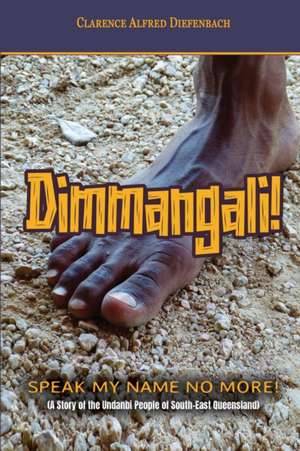Dimmangali; Speak My Name No More
Autor Clarence Alfred Diefenbachen Limba Engleză Paperback – 7 iun 2022
Preț: 158.76 lei
Nou
Puncte Express: 238
Preț estimativ în valută:
30.38€ • 31.66$ • 25.15£
30.38€ • 31.66$ • 25.15£
Carte disponibilă
Livrare economică 13-27 martie
Preluare comenzi: 021 569.72.76
Specificații
ISBN-13: 9781922792457
ISBN-10: 1922792454
Pagini: 496
Dimensiuni: 152 x 229 x 27 mm
Greutate: 0.71 kg
Editura: Inspiring Publishers
ISBN-10: 1922792454
Pagini: 496
Dimensiuni: 152 x 229 x 27 mm
Greutate: 0.71 kg
Editura: Inspiring Publishers
Notă biografică
Clarrie Diefenbach was a senior lecturer at Brisbane College of Advanced Education until his retirement in 1987. He has a Master of Education, the subject of his thesis being "Student Teachers' Attitudes to Aboriginals". He had, for many years, been lecturing in Prejudice and Racism, and been appalled at some of the attitudes he had come across. His attempts to have Indigenous non-matriculated students admitted to Colleges of Advanced Education and Universities for training as primary school teachers was largely instrumental in the decision to admit such students into Townsville Advanced College of Education. He was initially disappointed that they had not been taken into Kelvin Grove campus of BCAE, but accepted the decision because of the greater number of possible students in the north. Then, after further years of lobbying, he ultimately convinced the people who make such decisions to allow the Kelvin Grove Campus of BCAE to accept non-matriculated Aborigines to be trained as secondary teachers. He was overjoyed at this decision, for it was the first time in the whole of Australia that the powers that be were to admit that Indigenous non-matriculated students could perhaps become secondary school teachers, and he was determined that he would prove that he had been right in his long-held contention that they could. The College's first intake in 1985 included Chris Sarra, who became NAIDOC's 2016 Person of the Year. Clarrie dedicated his working life to the championing of Aboriginal causes, even visiting the Aurukun people in Cape York to better understand Aboriginal culture. He has lived in South East Queensland his entire life and is committed to both an accurate portrayal of the region's past and an enduring hope for its future.
